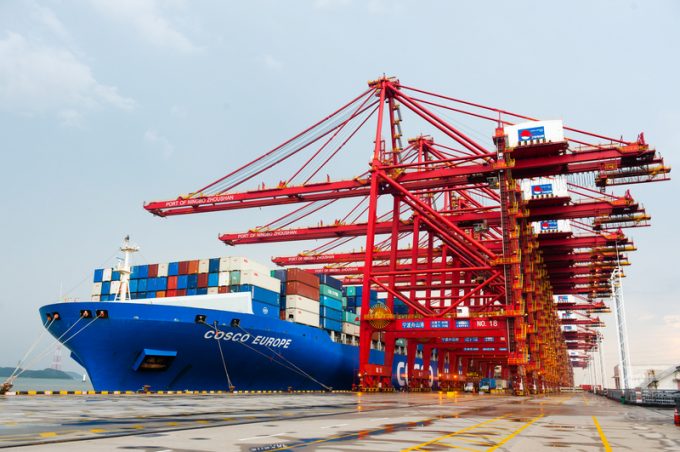Threat of rising oil price adds to frustration for crisis-hit supply chain chiefs
New warnings from the World Bank of surging oil prices, adding to the continuing instability ...

The contagion of skyrocketing container freight rates has now spread from the Asia-Europe tradelane, to the transpacific, and is also about to hit transatlantic shippers.
Spot rates from North Europe to the US east coast have been sub-economic for ocean carriers for some time, with for instance Xeneta’s XSI reading this week languishing at an average of just $1,464 per 40ft, compared with an average of $6,412 in the same week of last year.
And this is down from the robust $2,000-plus rates seen on this unspectacular, but less volatile, tradelane prior to the pandemic.
Under the US Shipping Act, carriers have a 30-day notice requirement before they can impose surcharges or GRIs (general rate increases), but the Federal Maritime Commission has waived this for shipments from Asia to the US being rerouted around the Cape of Good Hope due to the the Red Sea crisis.
But for transatlantic shipments, the lines must comply with the act, albeit that when the charges come they will be huge.
It follows that today’s announcement from Maersk of a PSS (peak season surcharge) of $750 per 40ft from North Europe to the US and Canada will not be effective until 5 February.
Maersk told customers the PSS was necessary “due to the dynamic market situation causing disruptions on global networks”.
Rival CMA CGM has already announced a “rate restoration initiative” for the trade of $1,000 per 40ft from European ports to the US, Canada and Mexico from 21 January.
The PSS and rate restorations come on top of GRIs carriers had already planned and that will now be underpinned, and the various PSSs, rate restorations and GRIs being pushed out by the transatlantic carriers will have an immediate impact on container spot rates, which are now expected to spike, despite demand being weak on the route.
Meanwhile, Asia-Europe carriers have announced numerous surcharges for cargo already in transit, having declared force majeure on bill of lading contracts, including transit disruption and emergency contingency surcharges, which consignees will be required to pay prior to the release of containers at the destination port.
Additionally, the lines have announced new FAK (freight all kinds) rates from Asia to Europe, with, for instance, CMA CGM advising that from 15 January it will charge $6,000 to ship a 40ft container from Asia to North Europe.
Container spot rates on the route are soaring, for example Drewry’s WCI Asia-North Europe component was up 115% on the week, and up 91% year on year, for an average of $3,577 per 40ft, with the WCI spot for Mediterranean ports up 114% and 43% respectively, to $4,178 per 40ft.
The indices are playing catch-up against a scenario of huge daily price hikes and will, no doubt, reflect the new market rates in due course.
Meanwhile on the transpacific, the freight rates hike contagion has spread to the Asia-US trades, with the WCI Asia-west coast reading up 30% on the week, for an average of $2,726 per 40ft, which is 39% higher than 12 months ago, while east coast rates were up 26%, to $3,858 per 40ft, which is, in contrast, only 2% higher than a year ago.
Asia-US west coast rates are predicted to spike further in the coming weeks, given the Panama Canal draught restrictions and the Suez Canal diversions that are impacting the all-water Asia-US east coast services.
Comment on this article